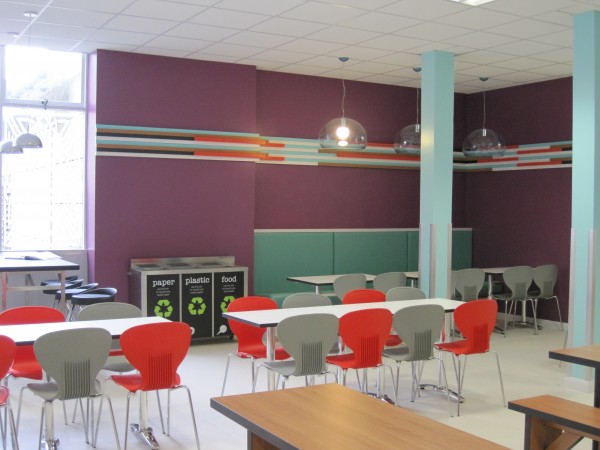 We’ve all been told many times of the importance of a good, well balanced diet and how the problem of childhood obesity is increasing at a worrying rate. With approximately one third of a child’s food intake being taken while they are at school, it is more important than ever to ensure that we are providing food that will aid their growth and development, promote concentration and engagement and give them the energy they need to perform well at school and beyond.
We’ve all been told many times of the importance of a good, well balanced diet and how the problem of childhood obesity is increasing at a worrying rate. With approximately one third of a child’s food intake being taken while they are at school, it is more important than ever to ensure that we are providing food that will aid their growth and development, promote concentration and engagement and give them the energy they need to perform well at school and beyond.
As a school manager, when it comes to school catering your main aim will be to provide a nutritionally balanced food offering that the students will be excited to eat, thus increasing meal uptake and encouraging a healthier lifestyle.
Here I outline my top ten tips on how to modernise your school catering facility and achieve the goals you set down for it. From menus and service, to the environment and facilities; keeping to a budget and getting everyone enthusiastic about food, while ensuring the new restaurant has maximum impact and sustainable use:
- Always have a plan – have a clear goal and vision in your mind of what you want to achieve from a new catering facility. Speak to everyone involved in making the change so that you can set realistic budgets and time scales, and know that what you are proposing is viable in the long term.
- See what other schools are doing – Find out whether any schools nearby have recently modernised their catering facility. Although a one-size-fits-all solution doesn’t exist, you can still take ideas and inspiration from what others have done, as well as getting the heads-up on what works and what doesn’t.
- Look at the whole dining experience – A good dining facility does not just focus on the food. If the food is great but the environment is dull and uncomfortable then students will go elsewhere. If the food and dining area are fantastic but the customer service is poor, then again, people will refuse to use the school restaurant. At Innovate we implement 4-step change, transforming food, service, staff and environment to create a dining experience that students and staff love.
- Create interesting and varied menus – work in partnership with staff, students and parents to create interesting, appealing menus that have something for all budgets, tastes and diets. Remember that ethnicity, religion, girl/boy split and potential allergies all effect what foods are popular in each student population. This will ensure that you are serving food that students want to eat and make them feel a part of and engaged in the service being provided.
- Keep things flowing smoothly – Work to reduce queuing and speed up traffic flow during service periods. If students know they are going to send their whole break time queuing, they are going to go elsewhere or opt for a packed lunch. Consider the option of cashless and biometric systems as you move forward. Once explained to parents, both are appealing as they avoid children having to carry cash into school.
- Promote Free School Meals – Encourage those who qualify for FSM to take advantage of the scheme. We believe that students do not take up the offer of free school meals because of a perceived negative perception. More than a quarter of children entitled to free school meals take a packed lunch instead because they fear being stigmatised, according to a recent study by the Institute for Social and Economic Research. To overcome this, at Innovate, we launched the iClub. A range of ‘meal deals’ fall within the cost of a free school meal, but are open for all students to buy. This makes it as easy and anonymous as possible for children on free school meals to choose from the daily menu.
- Integrate menus with school activities. Try linking the menu with extra-curricular activities, for example, if there is a sports match after school, offer grab-and-go items that a high in energy that students can keep for later. Some schools may want to offer a breakfast club or after-school tea so that students attending after-school activities or are in early have access to food.
- Factor staff training and communication into your plan – ensure there is a two-way communication with school management and all the stakeholders at the school or college; from the students and staff through to parents. Inviting parents to the school to try the food on the menu can dispel any preconceived negative ideas they have about ‘school dinners’. Having everyone on board from the beginning will ensure a smooth launch for your modernised catering facility and one that will be fully supported.
- Always get feedback – keep one step ahead by obtaining on-going feedback from students, staff and parents. Use this feedback to peg your pricing strategy, for example, or launch new offerings, such as themed menus. Your customers are also your biggest asset when it comes to recommending the service.
- Don’t stand still – continue to innovate and ensure that your school catering facility works with the modern family to give children a healthy eating plan for life.
Please submit your comments below.
Do you have something to say about this or any other school management issue which you'd like to share? Then write for us!






